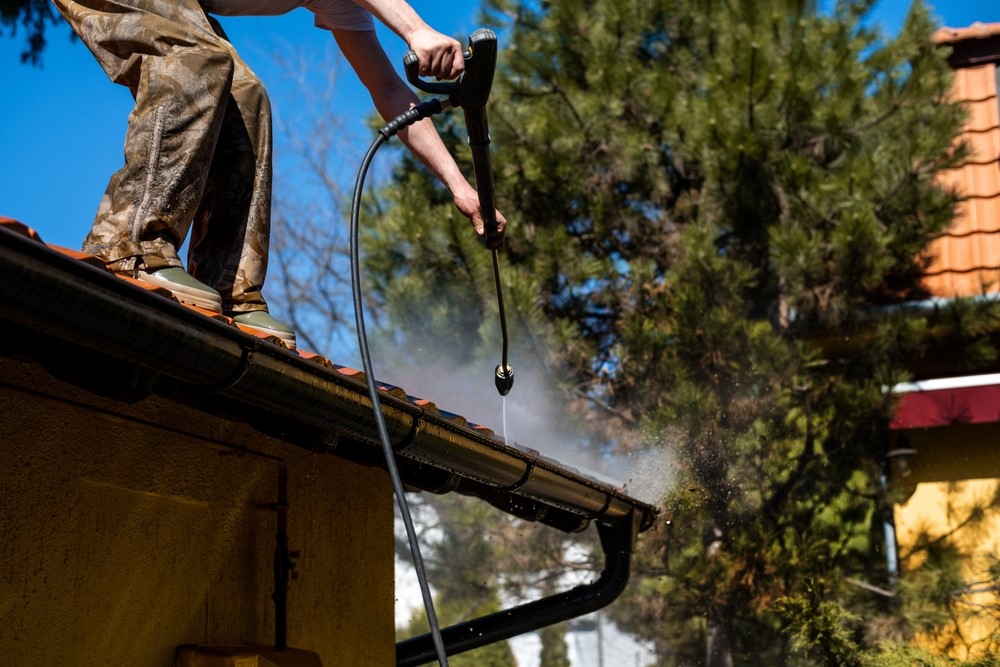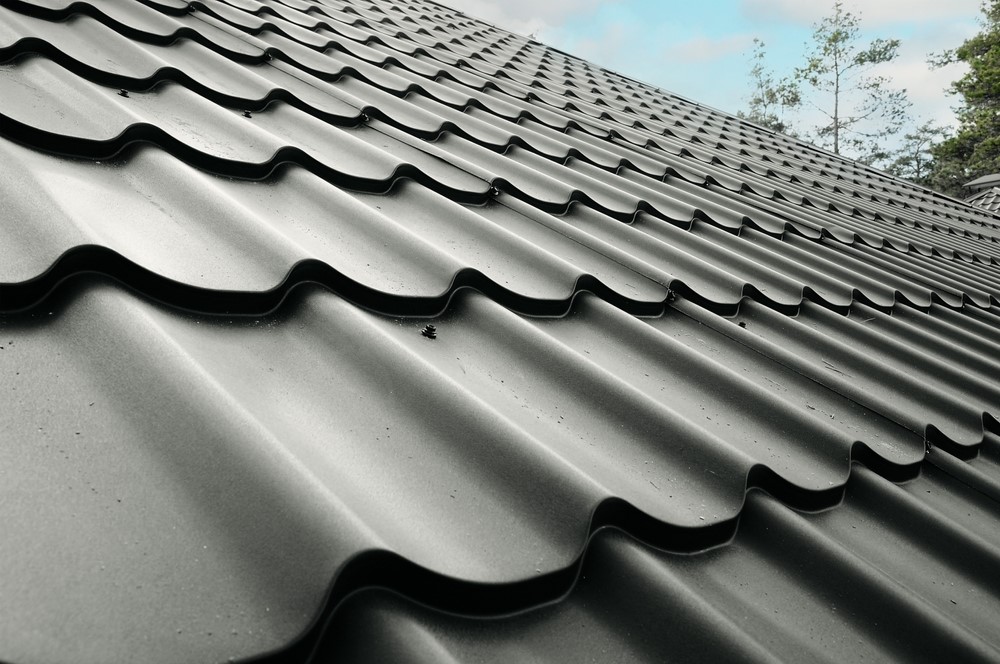Are you planning to replace your roof, but unsure whether to choose a commercial or residential roofing option? The decision can be overwhelming, especially if you’re unfamiliar with the differences between the two. In this article, we’ll explore the key distinctions between commercial and residential roofing in Washington and help you make an informed choice.
Roofing is an essential component of any building. Whether you’re constructing a new building or replacing an old roof, it’s crucial to choose the right type of roofing for your needs. Commercial and residential roofing are the two primary categories of roofing systems. The type of roofing you choose will depend on various factors, including the size of the building, the roof’s slope, and the intended use of the building. In Washington, commercial and residential roofing systems differ significantly. In this article, we’ll discuss the differences between the two and help you make an informed decision.
Key Differences Between Commercial and Residential Roofing
Commercial and residential roofing systems differ in several ways, including the materials used, the design, and the installation process. Here are some of the key differences:
Materials Used: Commercial roofing systems use materials that are durable and able to withstand harsh weather conditions. Some of the most common materials used in commercial roofing include metal, TPO, EPDM, and PVC. On the other hand, residential roofing systems typically use asphalt shingles, wood shingles, or clay tiles.
Design: Commercial roofing systems are designed to be functional and efficient. They are often flat or have a low slope to allow for easy installation of HVAC units and other equipment. Residential roofing systems, on the other hand, are designed to be aesthetically pleasing and complement the home’s overall design.
Installation Process: Installing a commercial roofing system requires specialized knowledge and equipment. It also takes longer to install compared to residential roofing systems. Residential roofing systems can often be installed in a day or two.
Materials Used in Commercial Roofing
Commercial roofing systems are designed to withstand heavy foot traffic, extreme weather conditions, and other environmental factors. Therefore, the materials used in commercial roofing must be durable and long-lasting. Here are some of the most common materials used in commercial roofing:
- Metal Roofing: Metal roofing is a popular choice for commercial roofing systems because of its durability and low maintenance requirements. It can last up to 50 years and is available in a variety of colors and styles.
- TPO Roofing: TPO roofing is a single-ply roofing membrane that is made from thermoplastic materials. It is lightweight, durable, and energy-efficient, making it an excellent choice for commercial roofing.
- EPDM Roofing: EPDM roofing is a synthetic rubber roofing membrane that is known for its durability and flexibility. It is easy to install and can last up to 30 years.
- PVC Roofing: PVC roofing is a single-ply roofing membrane that is made from polyvinyl chloride. It is resistant to UV rays, chemicals, and fire, making it an excellent choice for commercial roofing.
Materials Used in Residential Roofing
Residential roofing systems are designed to be aesthetically pleasing and complement the home’s overall design. The materials used in residential roofing are typically more decorative than commercial roofing materials. Here are some of the most common materials used in residential roofing:
- Asphalt Shingles: Asphalt shingles are the most popular choice for residential roofing systems. They are affordable, easy to install, and available in a variety of colors and styles.
- Wood Shingles: Wood shingles are another popular choice for residential roofing systems. They are natural and aesthetically pleasing, giving homes a rustic look. However, they require more maintenance than other materials and are susceptible to fire and rot.
- Clay Tiles: Clay tiles are durable and long lasting, making them an excellent choice for homes in areas with extreme weather conditions. They are also available in a variety of colors and styles, giving homes a unique look. However, they are heavy and require specialized installation.
Design Differences Between Commercial and Residential Roofing
Commercial and residential roofing systems differ in their design. Commercial roofing systems are designed to be functional and efficient, while residential roofing systems are designed to be aesthetically pleasing and complement the home’s overall design.
Commercial roofing systems are often flat or have a low slope to allow for easy installation of HVAC units and other equipment. They are also often made of materials that are lightweight and easy to install. On the other hand, residential roofing systems are typically sloped to allow for proper drainage and are often made of materials that are more decorative than commercial roofing materials.
Installation Process Differences Between Commercial and Residential Roofing
Installing a commercial roofing system requires specialized knowledge and equipment. The installation process can also take longer than installing a residential roofing system. The installation process for commercial roofing systems often involves several steps, including:
- Roof Preparation: The first step in installing a commercial roofing system is to prepare the roof by removing any old roofing materials and ensuring that the surface is clean and free of debris.
- Insulation: Commercial roofing systems require insulation to prevent energy loss and improve the building’s energy efficiency. The insulation is installed over the roof deck before the roofing materials are applied.
- Roofing Materials: The roofing materials are then applied to the roof in layers, starting with the underlayment and ending with the top layer.
- Flashing: Flashing is installed around roof penetrations and at the roof’s edges to prevent water from seeping in.
- Final Inspection: Once the roofing system is installed, a final inspection is conducted to ensure that everything is up to code and that the roof is watertight.
residential roofing systems. They are natural and aesthetically pleasing, giving homes a rustic look. However, they require more maintenance than other materials and are susceptible to fire and rot.
- Clay Tiles: Clay tiles are durable and long lasting, making them an excellent choice for homes in areas with extreme weather conditions. They are also available in a variety of colors and styles, giving homes a unique look. However, they are heavy and require specialized installation.
H3: Design Differences Between Commercial and Residential Roofing
Commercial and residential roofing systems differ in their design. Commercial roofing systems are designed to be functional and efficient, while residential roofing systems are designed to be aesthetically pleasing and complement the home’s overall design.
Commercial roofing systems are often flat or have a low slope to allow for easy installation of HVAC units and other equipment. They are also often made of materials that are lightweight and easy to install. On the other hand, residential roofing systems are typically sloped to allow for proper drainage and are often made of materials that are more decorative than commercial roofing materials.
H4: Installation Process Differences Between Commercial and Residential Roofing
Installing a commercial roofing system requires specialized knowledge and equipment. The installation process can also take longer than installing a residential roofing system. The installation process for commercial roofing systems often involves several steps, including:
- Roof Preparation: The first step in installing a commercial roofing system is to prepare the roof by removing any old roofing materials and ensuring that the surface is clean and free of debris.
- Insulation: Commercial roofing systems require insulation to prevent energy loss and improve the building’s energy efficiency. The insulation is installed over the roof deck before the roofing materials are applied.
- Roofing Materials: The roofing materials are then applied to the roof in layers, starting with the underlayment and ending with the top layer.
- Flashing: Flashing is installed around roof penetrations and at the roof’s edges to prevent water from seeping in.
- Final Inspection: Once the roofing system is installed, a final inspection is conducted to ensure that everything is up to code and that the roof is watertight.
Residential roofing systems, on the other hand, can often be installed in a day or two. The installation process typically involves the following steps:
- Roof Preparation: The first step in installing a residential roofing system is to prepare the roof by removing any old roofing materials and ensuring that the surface is clean and free of debris.
- Underlayment: The underlayment is installed over the roof deck to provide an additional layer of protection against water damage.
- Shingles: The shingles are then installed over the underlayment in rows, starting at the bottom of the roof and working upwards.
- Flashing: Flashing is installed around roof penetrations and at the roof’s edges to prevent water from seeping in.
- Final Inspection: Once the roofing system is installed, a final inspection is conducted to ensure that everything is up to code and that the roof is watertight.
FAQs About Commercial and Residential Roofing in Washington
- What is the average lifespan of a commercial roofing system in Washington?
The lifespan of a commercial roofing system in Washington can vary depending on the materials used, the installation quality, and the maintenance performed. However, a well-installed and maintained commercial roofing system can last up to 25 years or more.
- What is the average lifespan of a residential roofing system in Washington?
The lifespan of a residential roofing system in Washington can vary depending on the materials used, the installation quality, and the maintenance performed. However, a well-installed and maintained residential roofing system can last up to 20 years or more.
- Which roofing material is the most energy-efficient for commercial buildings in Washington?
TPO roofing is one of the most energy-efficient roofing materials for commercial buildings in Washington. It reflects heat and UV rays, keeping the building cooler in the summer and reducing energy costs.
- Can residential roofing materials be used on commercial buildings in Washington?
While it’s technically possible to use residential roofing materials on commercial buildings in Washington, it’s not recommended. Residential roofing materials are not designed to withstand heavy foot traffic or extreme weather conditions, making them less durable than commercial roofing materials.
- How long does it take to install a commercial roofing system in Washington?
The installation time for a commercial roofing system in Washington can vary depending on the size of the building, the complexity of the roof design, and the materials used. However, it generally takes longer to install a commercial roofing system than a residential roofing system, typically taking several days to a few weeks.
Choosing between commercial and residential roofing systems in Washington requires careful consideration of several factors, including the building’s size, design, and intended use. Commercial roofing systems are designed to be functional and efficient, while residential roofing systems are designed to be aesthetically pleasing and complement the home’s overall design. The materials used and the installation process for commercial and residential roofing systems also differ significantly.
By understanding the differences between commercial and residential roofing systems, you can make an informed decision about which type of roofing system is best for your needs. Whether you’re replacing an old roof or constructing a new building, choosing the right roofing system can save you time, money, and stress in the long run.
Subscribe to Cascade Roofing Company's Blog








Comments